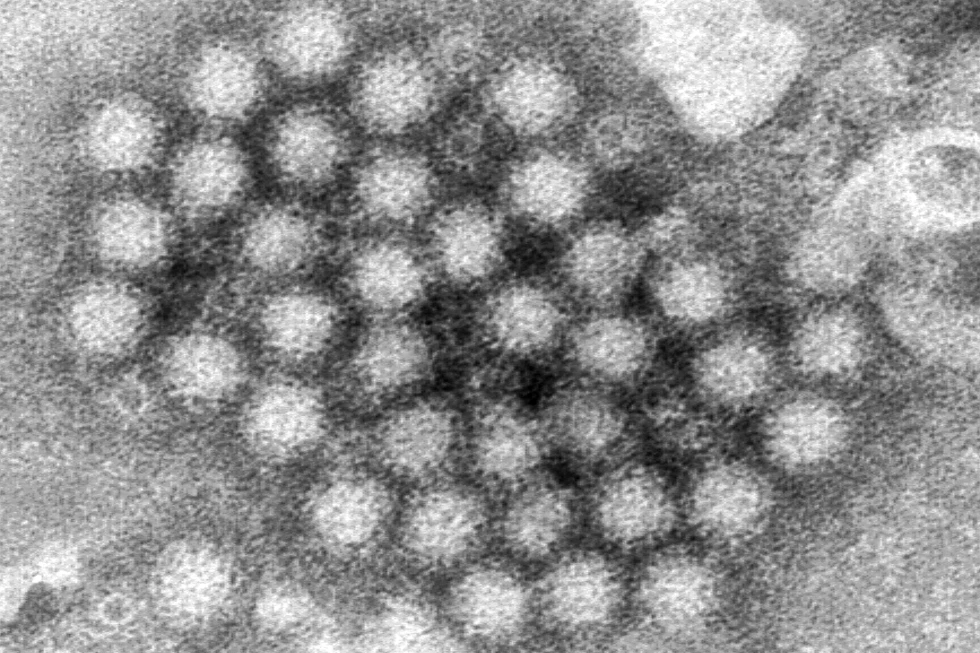The United States is experiencing a significant increase in norovirus cases, with health officials urging the public to take precautions against the highly contagious stomach virus. The Centers for Disease Control and Prevention (CDC) has reported a surge in outbreaks, with 91 confirmed incidents during the week of December 5, up from 69 outbreaks the previous week.
Norovirus, often referred to as the “stomach flu” (though unrelated to influenza), is the leading cause of foodborne illness in the U.S., affecting millions of people annually. Recent outbreaks in schools, nursing homes, and public spaces highlight the virus’s rapid spread and the need for heightened vigilance.
What Is Norovirus?
Norovirus is a highly contagious virus that causes gastroenteritis, leading to inflammation of the stomach and intestines. Symptoms typically include nausea, vomiting, diarrhea, stomach pain, and sometimes fever or muscle aches. These symptoms usually develop 12 to 48 hours after exposure and last one to three days.
While most people recover without complications, norovirus can cause severe dehydration, particularly in young children, the elderly, and individuals with weakened immune systems. The CDC estimates that the virus is responsible for approximately:
- 21 million cases of illness annually in the U.S.
- 109,000 hospitalizations
- 900 deaths, predominantly among adults aged 65 and older.
The virus spreads easily through direct contact with infected individuals, consuming contaminated food or water, or touching surfaces contaminated with the virus. Alarmingly, as few as 10 viral particles can cause an infection.
Recent Outbreaks Across the Nation
- Schools and Public Spaces One of the more significant outbreaks occurred in a suburban Detroit school, where widespread illness among students and staff forced the school to temporarily close. Officials worked to disinfect the premises before reopening.
- Tourist Destinations In Hawaii, the Kalalau Trail, a popular hiking spot, was closed for nearly a month after dozens of visitors fell ill with symptoms linked to norovirus. The trail has since reopened following extensive cleanup efforts.
- Nursing Homes Nursing homes across several states have reported outbreaks, raising concerns about the vulnerability of elderly residents. These facilities have increased hygiene protocols to curb the virus’s spread.
Why Norovirus Spreads So Easily
Norovirus is infamous for its ability to spread rapidly in crowded or shared environments. Unlike many other pathogens, the virus can survive on surfaces for extended periods, making it particularly challenging to control. It is resistant to alcohol-based hand sanitizers, requiring thorough handwashing with soap and water to effectively remove the virus.
Environmental factors also play a role. Colder months often see a rise in norovirus cases as people spend more time indoors, increasing the likelihood of close contact and shared surfaces.
Preventative Measures and Recommendations
Health officials are urging the public to take the following precautions to prevent norovirus infections:
- Hand Hygiene: Wash hands thoroughly with soap and water, especially after using the restroom, before preparing food, and before eating. Alcohol-based hand sanitizers are less effective against norovirus.
- Food Safety:
- Wash fruits and vegetables thoroughly before eating.
- Ensure shellfish is cooked thoroughly, as raw or undercooked shellfish can harbor the virus.
- Disinfect Surfaces: Clean and disinfect surfaces using bleach-based cleaners, particularly in high-traffic areas like kitchens and bathrooms.
- Stay Home When Sick: People experiencing norovirus symptoms should avoid going to work, school, or public places until at least 48 hours after symptoms subside. This helps prevent spreading the virus to others.
- Hydration: For those infected, staying hydrated is crucial to avoid complications from dehydration. Drink plenty of fluids, such as water, electrolyte solutions, or clear broths.
Treating Norovirus
There is no specific treatment for norovirus, as it is a viral infection. Recovery focuses on managing symptoms and preventing dehydration. Over-the-counter medications may help alleviate discomfort, but health experts advise consulting a doctor for severe or prolonged symptoms.
What’s Next?
As cases continue to rise, public health officials are emphasizing education and preparedness. Schools, healthcare facilities, and other communal environments are being urged to strengthen hygiene measures to minimize outbreaks. Researchers are also exploring potential vaccines for norovirus, though none are currently available.
This recent surge in norovirus serves as a reminder of the importance of public health measures to combat infectious diseases. The CDC is closely monitoring outbreaks and encourages anyone experiencing symptoms to follow recommended guidelines to reduce the risk of spreading the virus.
Sources:
- AP News: Norovirus outbreaks surging in the U.S.
- CDC: Norovirus and foodborne illnesses
- Hawaii’s Kalalau Trail reopens after norovirus outbreak
- Detroit school temporarily closes due to norovirus

